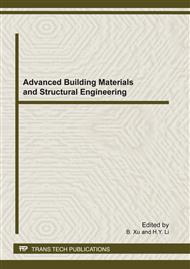p.246
p.250
p.255
p.259
p.265
p.272
p.277
p.281
p.289
Application of Lie Group Analysis to the Plastic Torsion of Rod with the Saint Venant–Mises Yield Criterion
Abstract:
Based on Lie group and Lie algebra theory, the basic principles of Lie group analysis of differential equations in mechanics are analyzed, and its validity in theory of plasticity is explained by example. For the plastic torsion of rod with variable cross section that consists in non-linear Saint Venant-Mises yield criterion, the 10-dimensional Lie algebra admitted by the equilibrium equation and yield criterion is completely solved, and invariants and group invariant solutions relative to different sub-algebras are given. At last, physical explanations of each group invariant solution are discussed by some types of transformations.
Info:
Periodical:
Pages:
265-271
Citation:
Online since:
February 2012
Authors:
Price:
Сopyright:
© 2012 Trans Tech Publications Ltd. All Rights Reserved
Share:
Citation:


